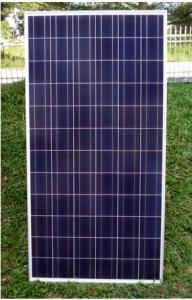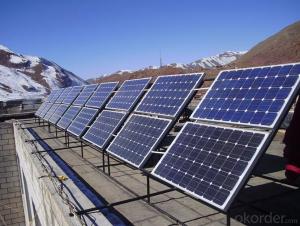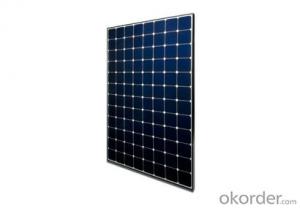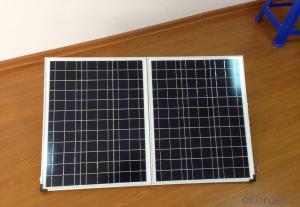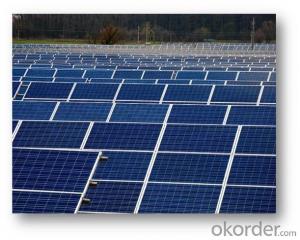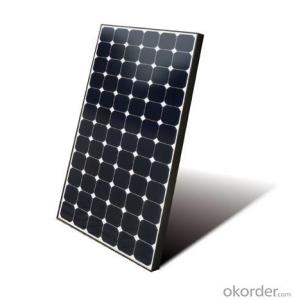210W Monocrystalline Solar Panels for Ac Unit with Outstanding Quality and Price
- Loading Port:
- Shanghai
- Payment Terms:
- TT OR LC
- Min Order Qty:
- 100 watt
- Supply Capability:
- 10000 watt/month
OKorder Service Pledge
OKorder Financial Service
You Might Also Like
Specification
Monocrystalline Solar Module 210W with Outstanding Quality and Price
Production Description
solar cell (or a "photovoltaic" cell) is a device that converts photons from the sun (solar light) into electricity.
In general, a solar cell that includes both solar and nonsolar sources of light (such as photons from incandescent bulbs) is termed a photovoltaic cell.
Fundamentally, the device needs to fulfill only two functions: photogeneration of charge carriers (electrons and holes) in a light-absorbing material, and separation of the charge carriers to a conductive contact that will transmit the electricity.
This conversion is called the photovoltaic effect, and the field of research related to solar cells is known as photovoltaics.
Solar cells have many applications.
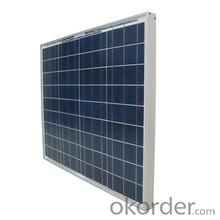
Application
remote area home system
earth orbiting satellites
consumer system
water pumping system
residential
commercial
industrial
rooftop
Product Feature
Higer convension than the poly solar module
12 years product warranty
A grade solar panel with good surface looking
EVA tempered glass TPT
MC4 connecter
Package
24pcs into one carton 312pcs into a 20 foot container.
- Q: Lower solar panel/wind turbine prices allow wider applications, hence a great help to a greener mother earth!
- Wind okorder / For the period 87 - 200: Low Risk = bonds = .8% ROI High Risk = stocks = 5.4% ROI For the period 982 - 200: Low Risk = bonds = 5.% ROI High Risk = stocks = 6.% ROI
- Q: our school spends around $0,000 dollars on energy.we want to know how much money would installing solar panels on the roof save our school.
- Where do you live? In almost all areas, solar power is currently really expensive. It looks like it'll be 0-5 years before they're cost effective... sorry to tell you! If your school is a tall building with few similarly tall buildings/trees around it then mini-wind turbines might be worth a look. You'd have to measure the wind for a year or so to get an idea of whether it's worth it though - in most cases mini wind turbines aren't very good either!
- Q: If a solar panel is a .5kW system, what length of time is it putting out that much power? Every hour?
- Solar panels are rated under standard test conditions (STC), a certain amount of light at a certain distance, at a certain temperature, etc. A kW, or kilo watt, is 000 watts. So for the amount of time that the sun meets those conditions, the rate of output is 500 watts. An average location has an average of 5 sun hours a day, the total time that you produce the rated output. Watts is a rate, like miles per hour (mph), how fast it is going. Watt hours, or kilo watt hours (kwh) is a quantity, like miles. So if you drive 50 mph for 5 hours, you went 250 miles (50 mph x 5 hours). If you produce .5kw for 5 hours, you have the potential to produce 7.5kwh a day. Multiply that by 30 days in a month, you get 225kwh a month. In reality you will lose about 30% of the rated power from less than ideal weather, system losses, etc., so it's more like 50kwh a month. You can look at your electric bill to see how many kwh you use a month, maybe around 000kwh, and see what percentage of your usage a system like that can power.
- Q: I am working on a project and I have to build a house with solar panels. My teacher asked me how would I get solar energy if it is rainy or cloudy? I looked it up but didn't understand. Please help me!!
- You okorder /
- Q: Can solar panels be installed on public transportation systems?
- Yes, solar panels can be installed on public transportation systems. In fact, many cities around the world are increasingly integrating solar panels onto buses, trams, and trains to harness clean energy and reduce carbon emissions. These panels can be installed on the roofs or sides of vehicles, enabling them to generate electricity and contribute to the power needs of the transportation systems.
- Q: I have heard a lot about solar panels and I want to know how these solar panels works and is it really possible to generate electricity using solar panels. And what is the cost of getting a solar panel installed?
- solar panels are a waste, I work for the biggest energy producer on the east coast and we are required by some really dumb laws to have many types of energy sources, fo course the only ones we make money on are coal and nuclear, solar panels we lose a ton of money on because they never make up for the cost it takes to buy them, and technology cannot bring them down because their too expensive even with a gov't subsidy bc of the products to make them. Don't waste your time with them, if you want to save money get a wood furnace
- Q: trees vs solar panels who would win?
- hmmmmm trees would squash em and solar pannels would electric cute em............... :)
- Q: Okay, so I have a science fair coming up soon and I need help with my project. SO - What should I use to demonstrate with the propeller? A toy boat? Plane? And I only have mini solar panels ; so how do I put the solar panels on the toy boat/plane to make the propeller move off of the sun's energy? Thanks. Steps please!
- Solar panels produce electricity. To move the propeller you need mechanical motion. An Electric motor converts from electrical to mechanical power. Most Solar Panels produce DC electricity as do batteries so you need a DC motor that is sized to match the Output of your solar panels. For small temporary projects like this I find that hot melt glue is great to assemble parts. Using a voltage meter you can expose your solar panels to a strong light (or one equal to what you expect during your demonstration) and measure the voltage across the terminals. This may help to size the motor. It depends upon the size of your propeller and how it is made. Your three choices are to use it to power an airplane, to power a boat underwater or to power a boat like an air boat. You might also use the air boat concept to make a car. (air car) The air boat might be the simplest to make but you will need a body of water to demonstrate the concept. The air car doesn't have such a requirement.
- Q: Can solar panels be used to charge electric vehicles?
- Yes, solar panels can be used to charge electric vehicles. By harnessing the energy from the sun, solar panels can convert sunlight into electricity, which can then be used to charge the batteries of electric vehicles. This provides a sustainable and environmentally friendly way to power electric vehicles.
- Q: i just took a trip to florida, they are cutting down anything that doesnt float and putting up buildings. Most of these cost a bundle, bill gates may pay cash for them, but most people will have many payments. Since pools, satellite dishes, and docks if near the water seem to be standard issue, why not a couple solar panels and water heater. It is florida after all, and if you are allready paying a half million or so for a house, what is another 0k gonna mean to you. Why dont they make it mandatory to include these on all new housing and condos and businesses. With that many the price would come down quickly and pay for itself long before the house is payed off and/or florida is flooded due to global warming.
- Wow that is a great idea! We have so many old houses around here that no one lives in and they are building houses on 2 /2 acre lots. That seems like a waste of land. There is this construction company that is building town houses with solar panel roofs and the upstairs is the bedrooms and the down stairs is the living area so that it takes a very small lot. 40 x 60 even has room for a car port and small backyard. My friend has one and he made it low cost so everyone has a chance at home ownership. They are being build where he is buying the land and tearing down old houses and puting up these town houses. Makes the town look better and cleans up otherwise bad looking neighborhoods. If they can do that here why not all over? By building up she was telling us it cost less for foundation and roofing which is the most expensive. It is 900' sq ft. 2 bdrm bath. Let's go back to the time when people didn't have to have these 6000 sq.ft houses with 5 acre lots.
Send your message to us
210W Monocrystalline Solar Panels for Ac Unit with Outstanding Quality and Price
- Loading Port:
- Shanghai
- Payment Terms:
- TT OR LC
- Min Order Qty:
- 100 watt
- Supply Capability:
- 10000 watt/month
OKorder Service Pledge
OKorder Financial Service
Similar products
Hot products
Hot Searches
Related keywords
